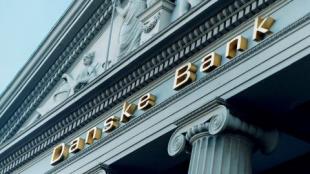Berlingske, a Danish daily newspaper, reported receiving bank statements for 20 more companies that held accounts at Danske Bank’s scandal-ridden Estonian branch between 2007 and 2015. Over the past year, the Copenhagen-based newspaper has uncovered evidence showing at least $4 billion was laundered at the bank.
The fresh data shows an additional $4.3 billion moving in a suspicious manner through the 20 accounts, with large sums criss-crossing through a web of shady companies.
The leak entails more than 43,000 transactions. Specific examples that point to money laundering include 132 transactions to real estate agents for lavish properties; 24 to sellers of diamonds and precious stones; and 25 to purveyors of luxury cars.
"Any competent investigator would have come to the conclusion that this was highly indicative of money laundering and should have prepared a formal report for filing with their local regulator,” Graham Barrow, a British money laundering expert who has examined some of the leaked data, told Berlingske. ”Even at an early stage, alarm bells should have rung.”
The 20 newly revealed companies have no websites, staff, or discernible activities, according to Berlingske, and company registers show that several have filed false financial accounts with authorities. The accounts show no normal business activity, such as payments for rent, salaries, or taxes.
Berlingske said the companies are typically registered in offshore havens, such as Panama or Belize, but have postal addresses in Moscow. Some have registered addresses at hotels with hundreds of other dubious companies.
Such companies are used to obscure their true beneficiaries, according to Berlingske. Previous leaks have allegedly involved companies connected to Azerbaijan’s ruling clique and the family of Russian President Vladimir Putin, as well as Russian intelligence.
The newspaper said the companies tied to the Danske scandal are also connected to the so-called Magnitsky case.
Sergei Magnitsky was a Russian lawyer who died under suspicious circumstances in a Russian prison after exposing the theft of tax payments by high-ranking officials and organized criminals. According to Berlingske, the leaked bank statements show Magnitsky money was funneled through Danske to fund luxurious lifestyles of Russian oligarchs and politicians.
“This new data leak shows that we have yet to see the full extent of the Danske Bank case. Money laundering of more than 50 billion kroner is an astronomical amount, and it just makes it even more spectacular that Danske Bank has so far escaped any fines,” Jakob Dedenroth Bernhoft, an expert on anti-money laundering laws, told Berlingske.
Danske was reprimanded in May by the Financial Supervisory Authority in Copenhagen, but it has not been charged by police for its alleged role in money laundering through Estonia.
The bank has launched major probes into the accusations, but Denmark’s new business minister has said the internal investigations may not be sufficient, according to Bloomberg.
“The full extent of this case makes it even harder to understand why there is still talk of how much the bank’s top management knew. In legal terms it’s more appropriate to talk about what they should have known. With the extent of this case, the top management should have known about suspicious transactions of this size,” Dedenroth said.
Following Tuesday’s report, shares in Danske fell 3.2 percent.

